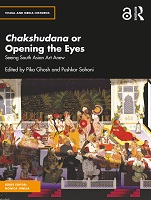Chapter 2 Region, Style, Idiom, and Ritual in History
Proposal review
Michael W. Meister on the Study of Jain Art
Abstract
Chakshudana or rituals of opening the eyes are practiced across multiple South Asian communities by artists, sculptors and priests. The ritual offers gods access to the mortal world, this practice applied to the study of art offers a distinctive perspective to interrogate the complex engagements with paintings, sculptures, found objects, fragments, built environments, and ecologies.
This volume takes as its focus the process of seeing—to look closely, remaining true to the object, but also to see widely, from multiple subjective stances and diverse bodily engagements from walking to dreaming, from glancing to looking askance, and hypnotic stares, and to see beyond the visible. It examines art history through nuanced considerations of materiality, aesthetics and regional specificities. The essays emerge from current research building on the contributions of Michael W. Meister, W. Norman Brown Distinguished Professor of History of Art and South Asia Studies at the University of Pennsylvania, whose works laid the foundations for the study of South Asian visual and material culture. The essays in this book underscore methodological resonances rather than privileging conventional categories of media or chronology exploring artistic media including temples and paintings, as well as Bengali quilted textiles, manuscript ‘lozenges,’ and metal repousse.
This volume, part of the Visual Media and Histories Series, will be of interest to students and researchers of history of art, religious studies, history, as well as the allied disciplines of anthropology and folklore studies.


 Download
Download